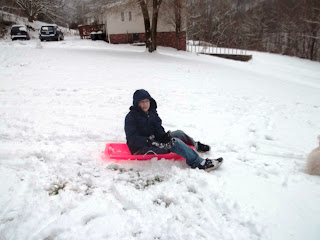This is the second part of my guest blog on Abbott Press. Here's the link on the Abbott Press website:
http://blog.abbottpress.com/promoting-your-novel-part-2/
Promoting Your Novel Part 2: Contests, Preparation and Keys to Success
Posted by Rebecca Elswick on Feb 19, 2013 in Guest Blogs

Recently on the Abbott Press blog, award-winning author Rebecca D. Elswick shared the first two steps of the “full-scale assault plan” she had ready for her book Mama’s Shoes when it debuted. In Promoting Your Novel Part 1, Elswick focused on the importance of networking and social media when marketing your book. Now, it’s time for Part 2, in which you’ll learn the benefits of entering contests, how to prepare for marketing opportunities, and the three keys to creating success as an author:
Wrong again.
It’s now time to enter contests. Since Abbott Press is an indie press, I own the rights to Mama’s Shoes which made it eligible for the Amazon Breakthrough Novel Contest. Yes, you guessed it, I entered Mama’s Shoes. The contest began with 5,000 novels vying for the prize — a publishing contract with Penguin Publishing. Round by round they eliminated novels and Mama’s Shoes stayed on the list. It made it to one of the 50 semi-finalists before losing to the final three. Not too shabby!
I also entered Mama’s Shoes in the ForeWord Review Book of the Year Contest. ForeWord, one of the few remaining wholly independent review sources, reviews more than 2,000 books a year from the country’s top small presses. Mama’s Shoes was one of ten finalists for the Book of the Year in the general fiction category. Due to my networking with other Appalachian authors, in the past year, Mama’s Shoes was nominated for: Library of Virginia Literary Award for Fiction; Weatherford Award given by Berea College and the Appalachian Studies Association; Thomas and Lillie D. Chaffin Award for Appalachian Writing given by Morehead State University, and of course the Writer’s Digest Mark of Quality Award.
Step Four: Be Prepared — Always be prepared. When you are invited to give a reading, or set up a table to sell books at an event, put your best self forward. Be on time, have ample books and
Step Five: Three Words of Advice — I’m often asked what I think is the key to writing a successful book. I tell aspiring writers they must do three things to be successful: read, write, and study.
- Read everything; classics, contemporary writers; bestsellers;
independent and small press books. Don’t limit your reading to your
writing type. Branch out and read other genres. There is much to be
gained from poetry even if you don’t aspire to write it. The same is
true of reading a memoir even if you never plan to write one, or a young
adult novel. Read these books as a writer — that is — study it as you
read. Look at how that author uses language, plot, setting and character
development.
- Write. Practice your craft. I believe that no writing is ever
“wasted” and that keeping a journal is invaluable to a writer. I often
gain inspiration by reading my old journals. Every writer experiences
those times when the “bucket runs dry.” The best way to refill it is to
write. Beware of spending too much time at the social media trough — it
can steal away your writing time.
- Study. If you truly want to be a successful writer, then you must study your craft. There is a wealth of books available for writers. I highly recommend Stephen King’s On Writing and Anne Lamott’s Bird by Bird. I also recommend attending writer’s workshops as a way to study your craft and network with other writers.











